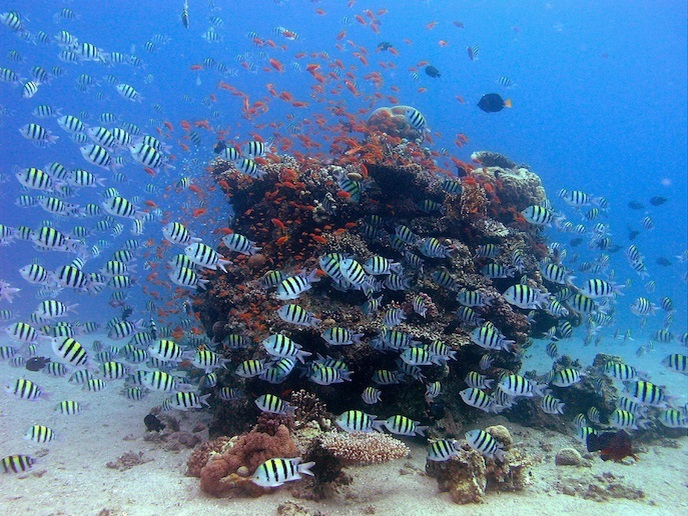A new hope for coral reefs
Rising sea levels, warmer water, more intense tropical storms, and altered ocean circulation patterns are causing mass coral bleaching events, outbreaks of infectious disease, and a reduction in the calcification process – all of which have a negative impact on shallow water coral reefs. In fact, some scientists estimate that, without effective mitigation measures, climate change could destroy half the world’s reefs by 2035. One such mitigation measure is the deep reef refugia hypothesis. “This hypothesis argues that because deep reef areas are better protected from the impact of climate change, they, in theory, could act as a refuge and source for repopulating their shallow counterparts following a catastrophic event,” explains Gal Eyal, a marine ecologist at Bar-Ilan University(opens in new window) in Israel. If the hypothesis proves to be true, it could serve as a basis for protecting shallow reefs. Unfortunately, not enough is known about the relationship between shallow and deep-water reefs – a knowledge gap that Eyal, through the support of the EU-funded Mesophotic(opens in new window) project, set out to help close.
The link between shallow and deep-sea habitats
Eyal’s research, which received support from the Marie Skłodowska-Curie Actions(opens in new window) programme, focused on mesophotic coral ecosystems, deep-water reefs that exist between 30 and 150 metres down in tropical and subtropical regions. “We know very little about these reefs, and we don’t really know what the effects of thermal stress, pollution and competition between species are on them,” he told ‘Horizon’, the EU research and innovation magazine(opens in new window). “If people don’t look at the reef as a whole, from shallow to deep, they miss a lot.” Bringing in experts from such diverse disciplines as biology, ecology, geology, geochemistry, climatology and computer modelling, the project examined nearly 100 mesophotic coral species in the Red Sea. “The light-dependent organisms that build up mesophotic ecosystems have been known to create massive reef structures,” says Eyal. “In many places, these reef structures physically link shallow and deep-sea habitats.”
Finding refuge in a mesophotic reef
Based on this research, the project made some insightful – and potentially groundbreaking – discoveries. For example, one unexpected discovery was that many underwater species could be found living in both shallow reefs and the deeper mesophotic reefs. “This finding supports the deep reef refugia hypothesis that shallow reefs damaged by, for example, a bleaching event, could find refuge and new life in a mesophotic reef,” adds Eyal.
A key role in protecting coral reefs against climate change
To test this conclusion, researchers physically transplanted mesophotic coral fragments growing at a depth of 50 metres into a depth of just five metres. What they found was that not only did these corals acclimate to the increased level of light that penetrates shallow areas, they also demonstrated an increased survival rate after three years. “While more research and experiments are required, our work supports the belief that mesophotic ecosystems are the missing link between shallow and deep-sea ecosystems,” concludes Eyal. “As such, they could play a key role in the fight to protect the world’s coral reef systems against the effects of climate change and therefore must be managed properly.”







